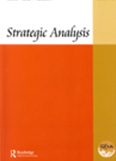Soft Borders and Cooperative Frontiers: India’s Changing Territorial Diplomacy Towards Pakistan and China
For decades, the dominant sense in the foreign policy establishment of India was that neither the Kashmir question nor the boundary dispute with China was ripe for resolution. Yet, in defiance of this received wisdom, two very different political coalitions have opened and sustained substantive negotiations on Jammu and Kashmir and the boundary dispute with China. Forward movement in both negotiations has also been premised on opening the closed frontiers with China and Pakistan.
- C. Raja Mohan
- January 2007






